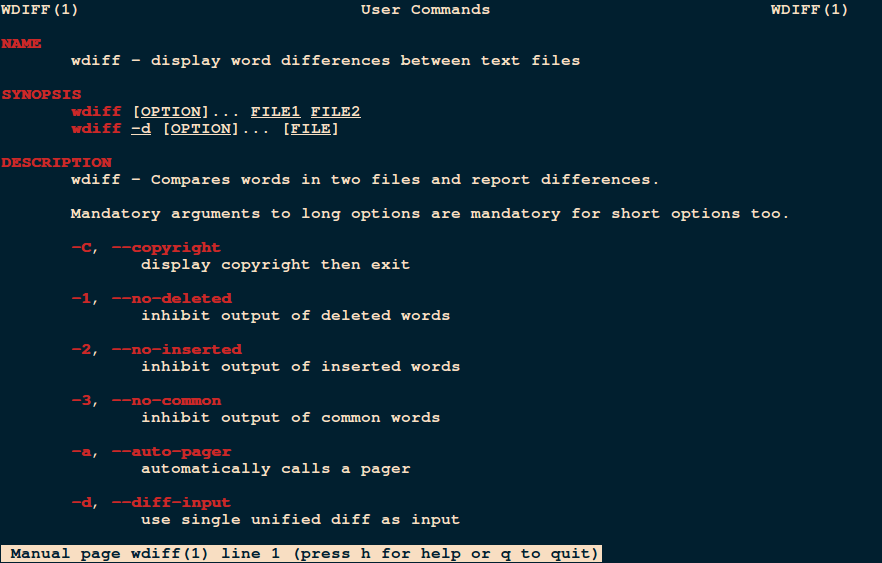


In addition, Perl language commands and the while loop can be used. The wc command method is the most commonly used method to count the length of a file. In Linux, we can count lines in a variety of ways based on the information in this article. Programmers’ productivity can be measured by dividing the number of lines in their code. It is also possible to use the slash command to display the line count of a file in Linux.

In Linux, there are several methods for estimating the number of lines in the files.
#LINUX COMPARE FILES CODE#
If you want to see how many lines are different between two files, you can use the wc ( word count) command to count the number of lines in the output of the diff command.Īs part of the code development process, developers frequently count lines in a file to determine the length of the code or the program. The output of the diff command shows the differences between the two files. Whereas filenames highlighted with green are only available to that respective directory.In Linux, the diff command is used to compare two files line by line. The ones which are marked with stars are the exact match. Once you click on the compare button, it will show you matching and different files available in the selected directories: Once you are done with the installation, open the Meld from your system menu and follow the three easy steps:
#LINUX COMPARE FILES HOW TO#
If you haven't configured flatpak on your system, check out our detailed guide on how to set up flatpak on various Linux distros.
#LINUX COMPARE FILES INSTALL#
It is also available as a flatpak: flatpak install flathub In Ubuntu/Debian, use: sudo apt install meld Meld is a GUI tool that allows you to check and merge differences. If you are not a terminal fan and want to compare the directories in the easiest way possible, use Meld. To see the difference, you can run the diff command again on the files to see how their content differs. The diff command shows what files differ in the directories. So if you will use both flags -q and -s, it will show both identical and different files of directories: diff -qrs LHB-1 LHB-2 You can easily do that using the -s flag. To perform the search including the subdirectory, you will have to use the -r flag: diff -qr LHB-1 LHB-2īut what if you want to know the similar files too? By default, it won't look for the files inside the subdirectory. diff -q LHB-1 LHB-2īut if you notice carefully, the diff command only looked on file level 1. To find the differences, you will have to use the -q option which will report only when the difference is found. To use the diff command, you will have to follow a simple syntax: diff -qr Directory-1 Directory-2 Use the diff command to compare directories in Linux So let's start this tutorial with the CLI method. The tree command shows the structures of the two directories I use in the examples. I will also discuss a GUI tool called Meld. In this tutorial, I'll share how you can use the diff command to compare directories. It is easier to visualize the difference between two directories using a GUI tool. How do you compare two files in Linux? You use the diff command.īut how do you compare two folders in Linux? You still use the diff command.


 0 kommentar(er)
0 kommentar(er)
